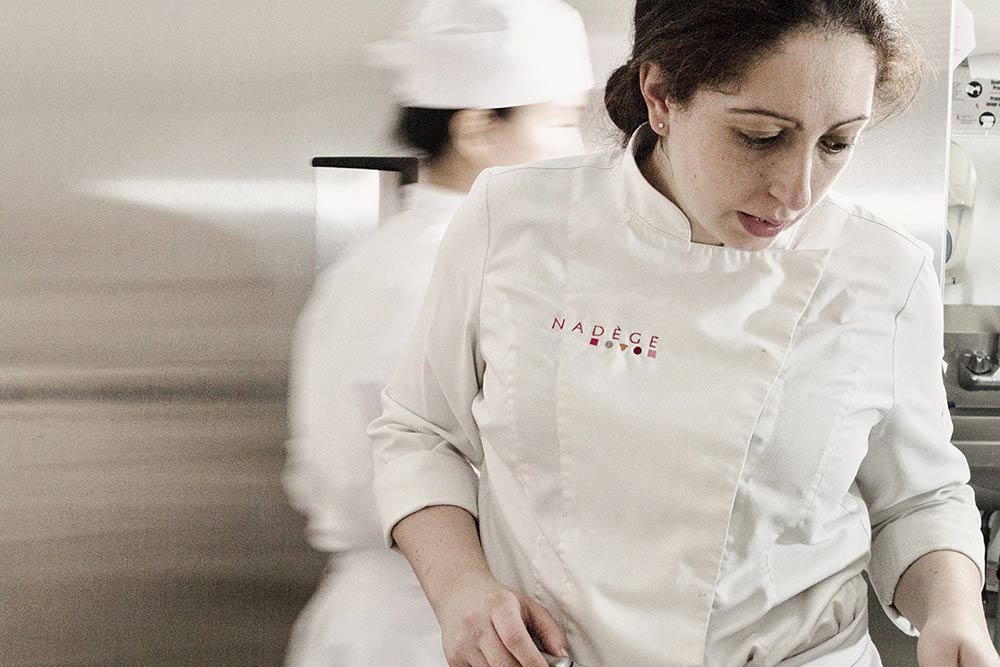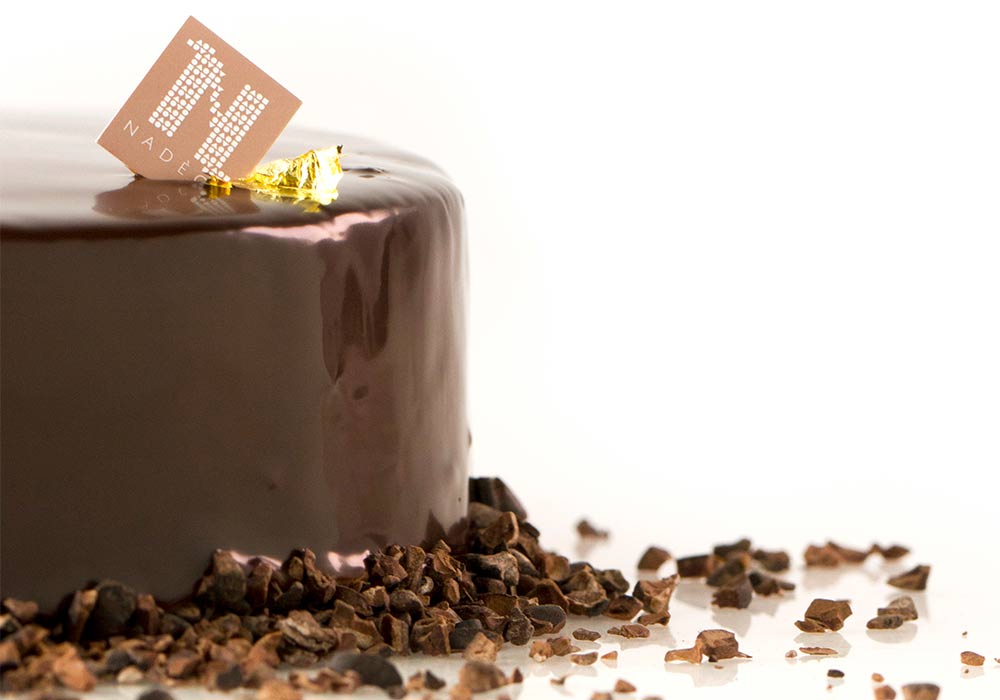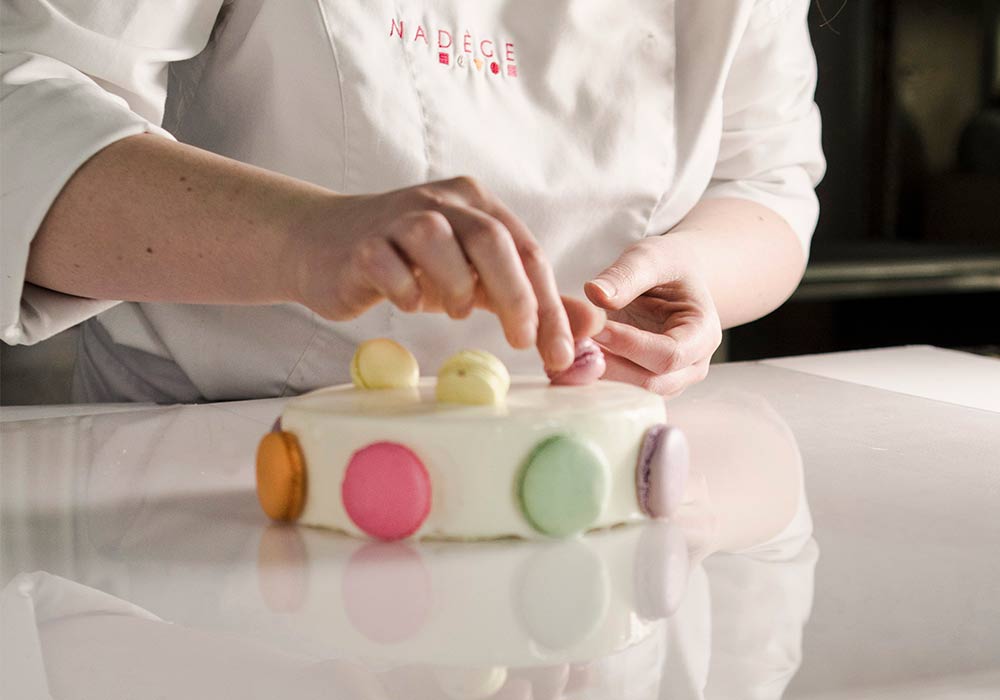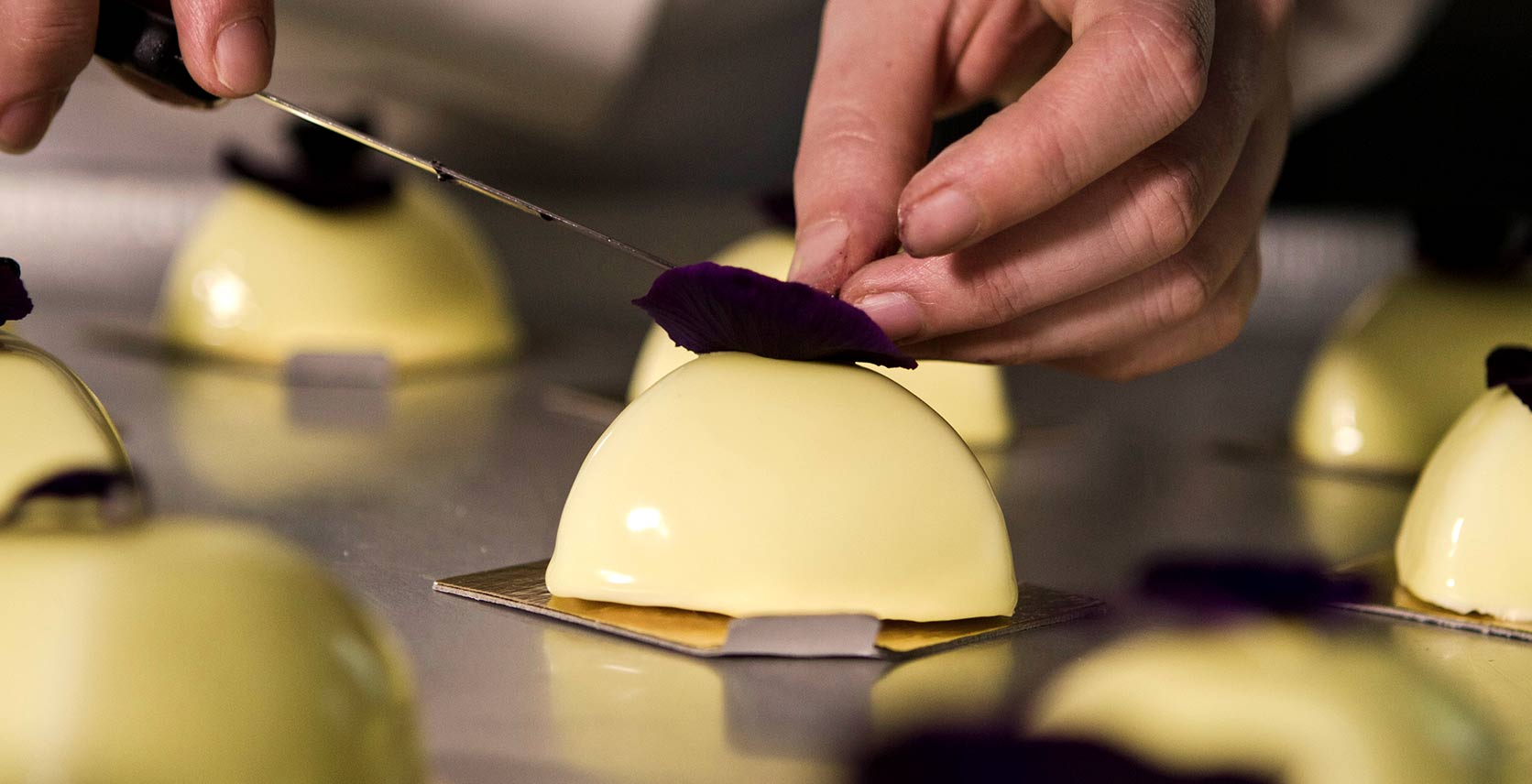How Nadege Nourian Built a French Pastry Empire
In the spring of 2002, I was working in London at The Ivy, then considered one of the best restaurants in the world. The basement kitchen brigade was almost exclusively English, but one voice stood out. It was strong, female, and extremely French. The pastry chef behind it stood shoulder to shoulder with the toughest cooks, chewing them out with their own quintessentially British expressions: “Stop being a wanker” and “Are you taking ze piss?” This was my introduction to my future sister-in-law, Nadege Nourian.
Fast-forward to 2009. At the height of the recession, Nadege set out to introduce Toronto to “true French patisserie.” She renovated an old photo studio on a then-gritty corner across from Trinity Bellwoods Park, creating a modern showroom for colourful macarons. Word spread. Nadege now has four locations, plus a mailing service that delivers cakes anywhere in Canada. As her pastry shops inch ever closer to achieving total dessert domination, I sat down with the chef to find out her recipe for stardom.

What were some early reactions?
People didn’t get it at first. They looked over our display case of perfectly lined-up cakes and asked if we were selling soap or candles. We realized we were going to have to change the way people thought about pastry.
What kept you going?
Architects, designers, and artists were some of the first to support us. We started to see them coming back and understood that there were people who appreciated our vision.
What’s the biggest challenge of executing French recipes in Toronto?
I only want the best, and it was a real struggle to find ingredients that met our standards — especially butter that had enough flavour and fat content for us.

Social media can make or break today’s restaurants. What role did it play?
When we opened, Toronto’s online community was far more established than that in Europe. We received a lot of positive reviews online, but we also had some brutal attacks. It was intense to transition from being a reclusive chef to being a public figure in conversation with everyone.
What was it like being a female pastry chef back in France?
It was tough. There were very few women in the kitchen. To get changed, I had to block the bottom of the bathroom stall because men would get down on their hands and knees to look under the door. It wasn’t until I moved to England that I saw other women in the kitchen. Still, I would phone to do a job interview and a restaurant owner would think I was calling for a waitress position.
What’s the attitude towards female chefs here in Canada?
We recently did a study, and it turns out most people think Nadege is an older business lady who’s never worked a day of her life in a kitchen. People still find it strange to imagine a strong chef as a woman. But I worked up to the day I gave birth to my son. He was born on a Wednesday, and I was back to work for a meeting on Monday.

How will the hospitality industry be affected by the rising costs of ingredients?
I’m worried only big operations will be able to afford to stay open. Dairy in Canada is the most expensive in the world, and that’s a base ingredient. Vanilla has gone up 1,000 per cent in four years.
What’s the biggest difference between French and Canadian eating habits?
In France, we eat everything, but in small portions. So overall we eat lighter and much more balanced — with lots of vegetables and fruits. Here, people embrace extreme eating trends. They either eat super clean or a lot of fast food that’s heavy and deep-fried.










